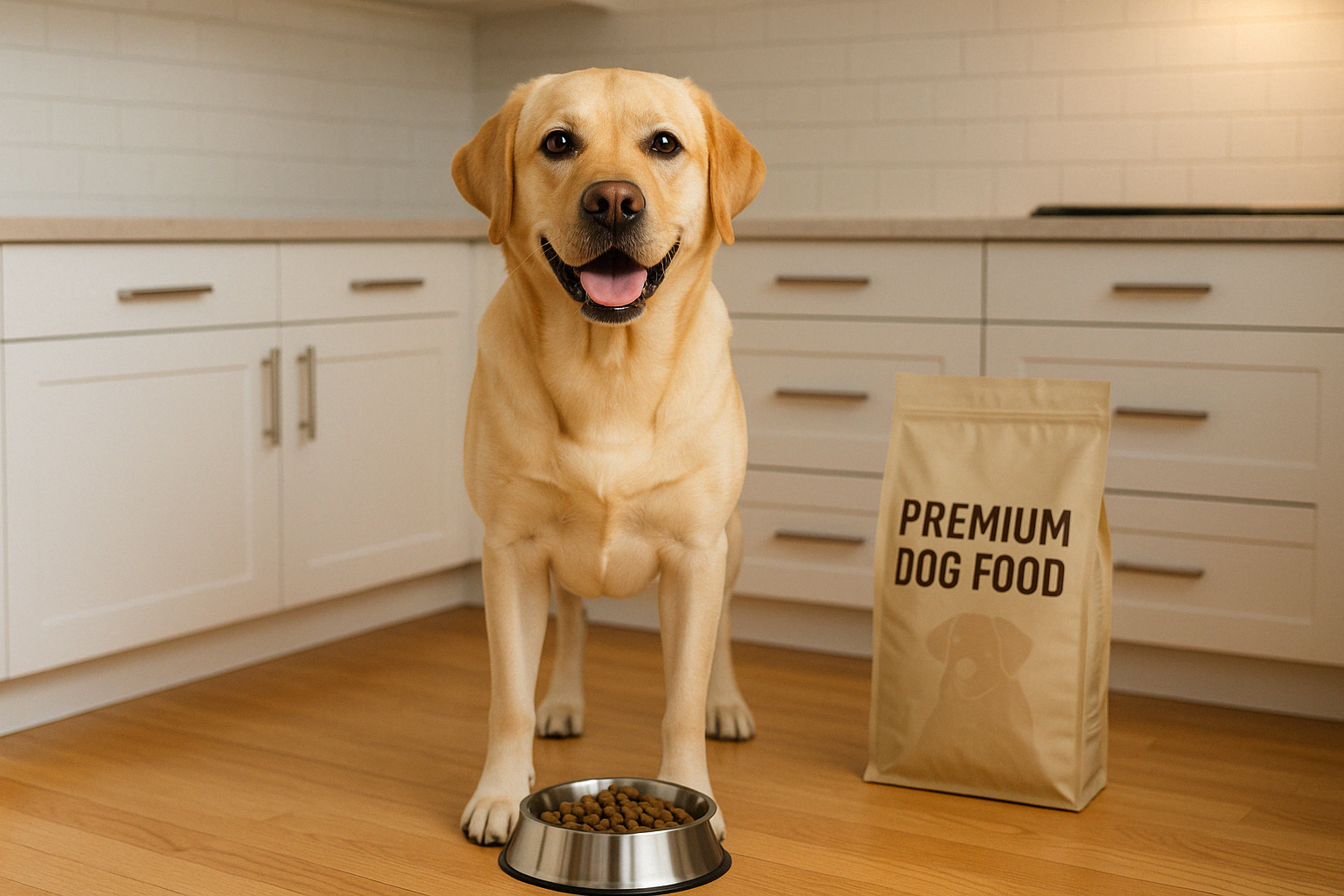Feeding your dog is about much more than just filling a bowl. Nutrition plays a critical role in your dog’s overall health, energy levels, coat condition, and even behavior. Whether you’re a first-time owner or want to improve your dog’s current diet, understanding the basics of canine nutrition is key.
Let’s dive into what you need to know to fuel your pup the right way — from kibble to calories.
Why Nutrition Matters
A balanced diet supports:
- Healthy digestion
- Strong immune system
- Shiny coat and healthy skin
- Good dental health
- Weight control and joint health
- Consistent energy and mood
Feeding your dog the right nutrients prevents disease and helps them thrive.
The Essential Nutrients Dogs Need
Dogs need six core nutrient groups:
1. Proteins
- Essential for building muscles, tissues, and enzymes
- Source: chicken, beef, lamb, turkey, fish, eggs
- Look for named meat as the first ingredient in kibble
2. Fats
- Provide energy and aid absorption of vitamins
- Essential fatty acids (Omega-3 and 6) support coat and skin
- Sources: fish oil, flaxseed, chicken fat
3. Carbohydrates
- Source of energy and fiber
- Should be digestible (brown rice, oatmeal, sweet potato)
- Avoid fillers like corn or soy in excess
4. Vitamins
- Support various body functions
- Often included in balanced kibble
- Too much from supplements can be harmful — check with your vet
5. Minerals
- Calcium, phosphorus, magnesium, and more
- Support bones, nerves, and fluid balance
- Must be in proper ratio, especially for puppies
6. Water
- Most important nutrient
- Always provide fresh, clean water daily
- Dogs can become dehydrated faster than you think
Dry Food vs. Wet Food vs. Raw
Dry Food (Kibble)
- Convenient, shelf-stable, helps clean teeth
- Choose a premium brand with named meats and no by-products
Wet Food
- More moisture, easier for seniors or picky eaters
- Watch out for high fat and spoilage if left out too long
Raw or Fresh Diets
- Can be beneficial if balanced properly
- Risk of bacterial contamination if not handled correctly
- Best done under vet or canine nutritionist guidance
Many owners feed a mix — just be sure the total diet stays balanced.
How Much Should You Feed?
It depends on:
- Age – Puppies need more calories; seniors often need fewer
- Weight and activity – Active dogs need more energy
- Breed size – Small dogs eat less, but may need more calorie-dense food
Use feeding guides on the packaging as a starting point, and adjust based on:
- Body condition (ribs should be felt, not seen)
- Energy level and appetite
- Vet recommendations
Tip: Measure your dog’s food to avoid overfeeding — even small extras add up!
Common Feeding Mistakes
- Overfeeding (especially treats!)
- Feeding only table scraps
- Not switching foods gradually
- Using poor-quality kibble with fillers
- Ignoring food allergies or sensitivities
Signs of poor nutrition include:
- Dull coat
- Diarrhea or frequent gas
- Low energy
- Excessive scratching or licking
- Weight gain or loss
Talk to your vet if you notice changes in appetite or digestion.
Treats and Snacks – How Much Is Too Much?
Treats are important for training and bonding, but they should make up no more than 10% of daily calories.
Good treat options:
- Freeze-dried meats
- Fresh fruits like apple slices or blueberries
- Small portions of cooked meat
- Carrot sticks or green beans
Avoid:
- Chocolate, grapes, raisins, onions, garlic, xylitol
- Anything seasoned or fried
When to Change Diets
You may need to switch foods if:
- Your dog has new allergies
- They’re entering a new life stage (puppy → adult → senior)
- You notice changes in weight, digestion, or energy
- Your vet recommends a special diet (e.g., low-fat, kidney support)
Make any changes gradually over 7–10 days to avoid stomach upset.
Final Thoughts
Good nutrition is the foundation of a long, healthy life. Don’t just think about what’s in the bowl — think about how it supports your dog’s body, brain, and heart.
With informed choices, high-quality food, and consistent routines, you’re not just feeding your dog — you’re giving them the best life possible, one bite at a time.

